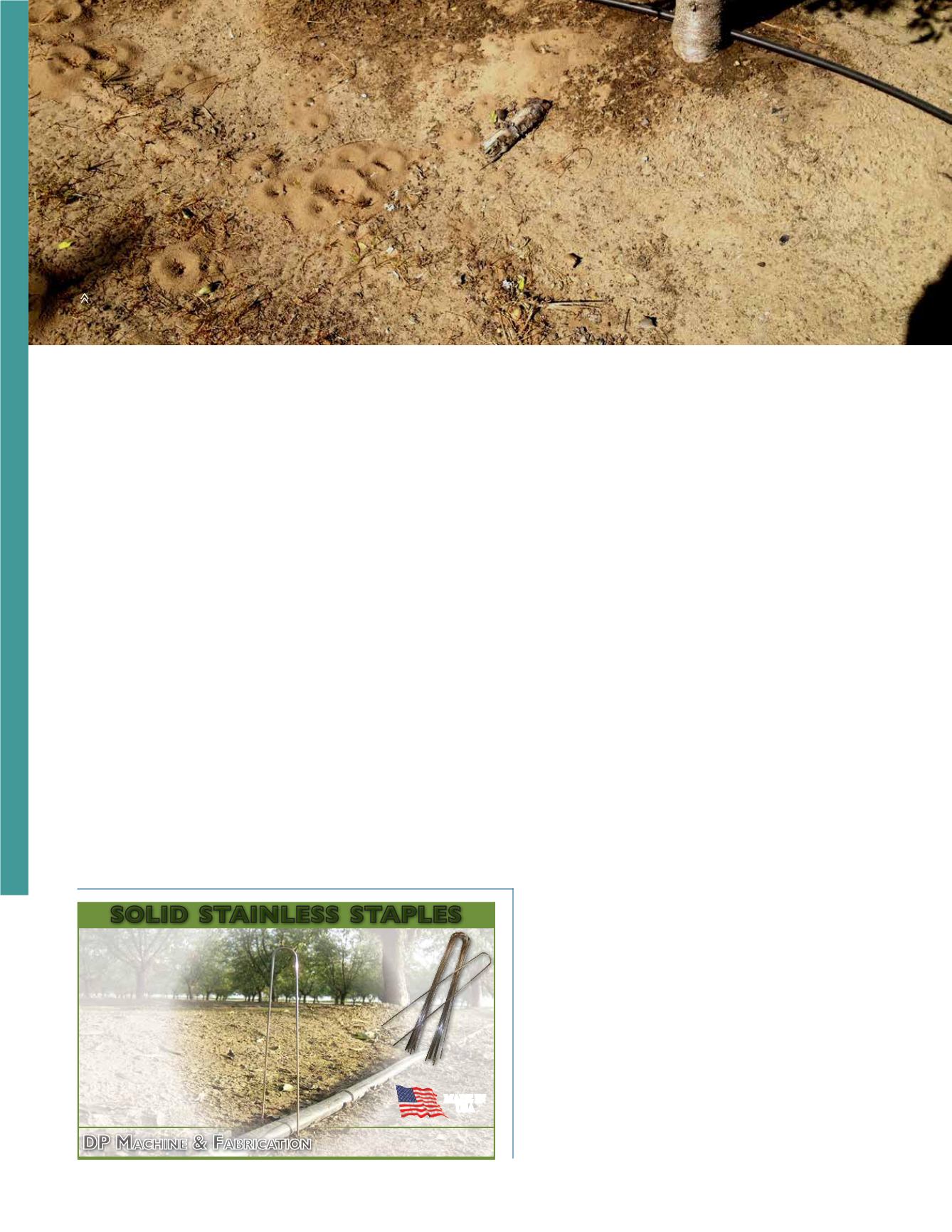
40
Almond Facts
MAY | JUNE 2015
Treat" and "Treat" columns on the sampling form provided
at the webspinning spider mite link of the UC Almond Pest
Management Guidelines
/
selectnewpest.almonds.html)
Many miticide options exist for cases where a treatment is
required. Each miticide has its strengths and weaknesses, and
for that reason options should be discussed with a pest control
advisor. For almond growers in the San Joaquin Valley that
plan on using miticides containing abamectin, keep in mind
that new regulations require that only low-VOC formulations
be used between May 1 and 31 October 2015 and 2016.
More details on this new regulation and all miticide options
can be found in the UC Almond Pest Management Guidelines
(
).
Spray Rig Speed
Spray coverage for almond trees is based on the height and
density of the tree. If the height of the tree is under 10
feet, adequate spray coverage can be attained at almost any
reasonable speed. For taller orchards, however, slower speeds
have been shown to increase coverage. Research trials have
shown that a difference of a 1/2 mph (2.0 mph v/s 2.5 mph)
can reduce the coverage by 30 percent for trees 18' or higher.
Traveling at 3.25 MPH, less than 2 percent coverage was
achieved at a height of 20 feet. This reduction makes reduces
the concentration of the pesticide deposited, increasing the
chance of resistance formation, loss of crop due to disease/
insect damage, and tractor/rig damage. For maximum
coverage and pesticide efficacy, spray rig speeds should be
operated no faster than 2 MPH.
Ants
Ants are a serious problem where they are present. If in
high populations, they can consume between 1 to 2 percent
of the crop within four days. Fields should be scouted
and, if needed, baits should be applied. Baits - since they
are growth regulators- must be applied 1 month prior to
harvest for maximum effectiveness. If bait wasn't applied,
and fire or pavement ants are present, a broadcast spray of
organophosphate should be applied as close to harvest as
allowed to reduce foragers. Nuts should also be picked up as
soon as possible after shaking. Be mindful that not all ants
present within the orchard feed on almonds. A quick trick to
distinguish "good ants" from "bad ants" is to throw potato
chips or a hot dog near the mound. If consumed, it can be
assumed that the colony will also feed on almond kernels.
Another trick is to stomp near the mound to bring ants
to the surface. If they swarm out of the mound, are red in
color with a black butt and bite, they are mostly likely fire
ants. Monitoring and treatment information can be found at
(
).
Final Thoughts
As we prepare for an earlier than normal harvest,
remind your work crews to be careful with the heat
and around machinery. Long, hot days - especially
when short on sleep - slow our reflexes and reduce the
ability to make decisions. Work with the crews and
contractors to ensure that there is adequate shade and
water, and rules regarding pesticide usage are being
followed. If personally spraying or harvesting late,
have somebody check in every few hours to make sure
you are safe.
SOLID STAINLESS STAPLES
DP M
ACHINE
& F
ABRICATION
Sales: Jennifer (661) 746-6242
(661) 203-5544
/HQJWK
For
Safe
and
Secure
Drip
Line Placement
*UDGH /
5HVLVWV &RUURVLRQ
from
Acidic Water & Fertilizers
in All Soil Types
5HGXFH /DERU
2QH 7LPH ,QVWDOO
compared to Using Plain
or Coated Staples
6DYH 0RQH\
$YRLG
Constant Hose &
Fitting
Repairs
MADE IN
USA
TIME TO CONSIDER
Fire ant mounds in an almond orchard. Mounds tend to be at
the edge of the wetting profile and are found in groups of three or
more. Photo credit: David Doll.


